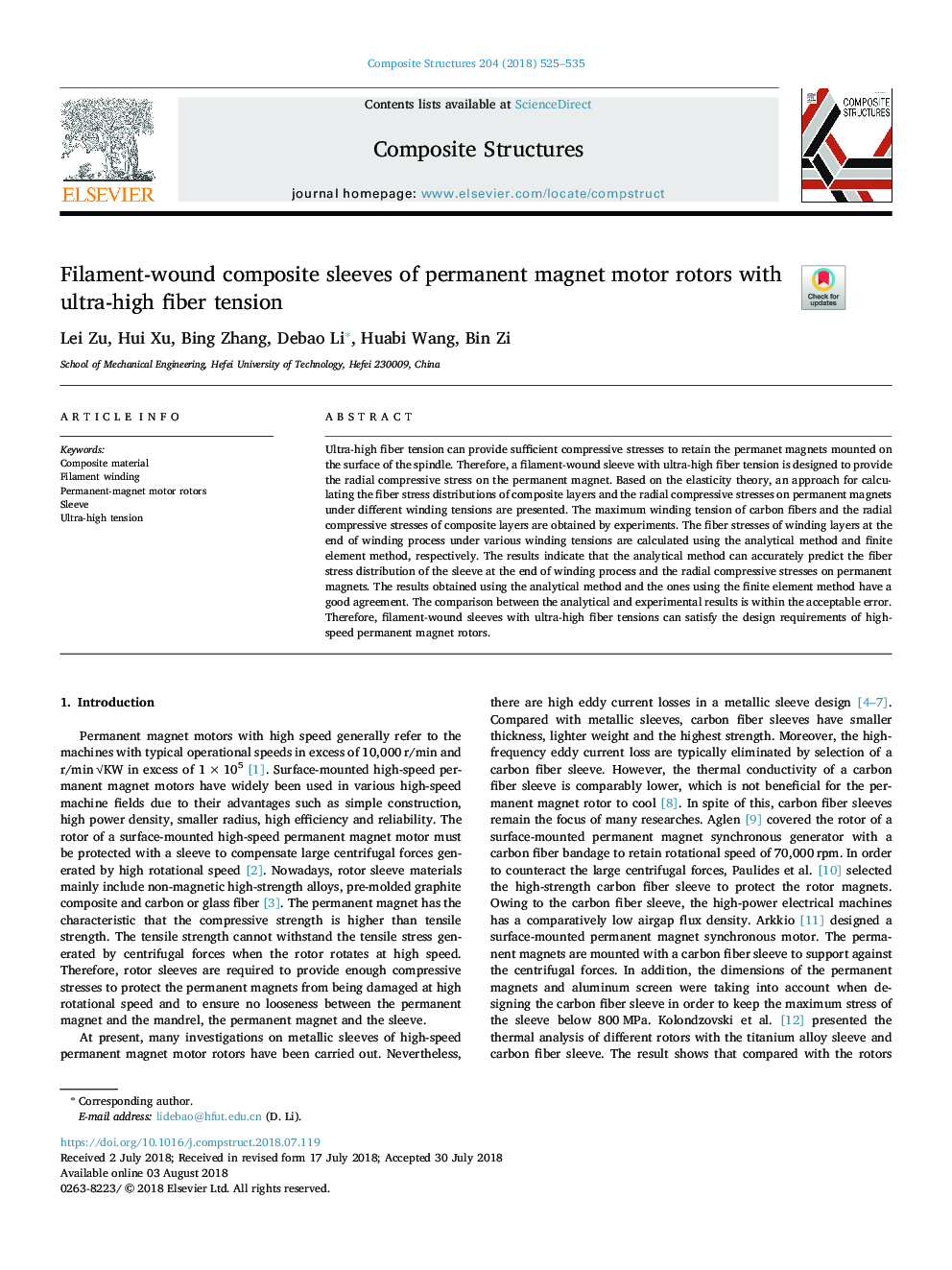| Article ID | Journal | Published Year | Pages | File Type |
|---|---|---|---|---|
| 6702694 | Composite Structures | 2018 | 11 Pages |
Abstract
Ultra-high fiber tension can provide sufficient compressive stresses to retain the permanet magnets mounted on the surface of the spindle. Therefore, a filament-wound sleeve with ultra-high fiber tension is designed to provide the radial compressive stress on the permanent magnet. Based on the elasticity theory, an approach for calculating the fiber stress distributions of composite layers and the radial compressive stresses on permanent magnets under different winding tensions are presented. The maximum winding tension of carbon fibers and the radial compressive stresses of composite layers are obtained by experiments. The fiber stresses of winding layers at the end of winding process under various winding tensions are calculated using the analytical method and finite element method, respectively. The results indicate that the analytical method can accurately predict the fiber stress distribution of the sleeve at the end of winding process and the radial compressive stresses on permanent magnets. The results obtained using the analytical method and the ones using the finite element method have a good agreement. The comparison between the analytical and experimental results is within the acceptable error. Therefore, filament-wound sleeves with ultra-high fiber tensions can satisfy the design requirements of high-speed permanent magnet rotors.
Related Topics
Physical Sciences and Engineering
Engineering
Civil and Structural Engineering
Authors
Lei Zu, Hui Xu, Bing Zhang, Debao Li, Huabi Wang, Bin Zi,
